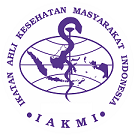Effect of Moringa Leaf Infusion (Moringa oleifera) on Reducing Blood Glucose and Total Cholesterol Levels in Mice (Mus musculus) with Diabetic Ulcers
DOI:
https://doi.org/10.26911/theijmed.2024.09.04.09Abstract
Background: Diabetes mellitus is a chronic disease in the form of metabolic disorders, which is characterized by blood glucose levels (KGD) that exceed normal limits and are accompanied by impaired metabolism of carbohydrates, lipids, and proteins, as a result of abnormalities in insulin secretion. Diabetics are known to have slow wound healing. Moringa oleifera leaves or moringa plants contain flavonoid compounds, which can decrease glucose absorption. This study aims to determine the effect of moringa leaf infusion on blood sugar levels, glucose tolerance, cholesterol levels, body weight, and wound healing speed in mouse model animals.
Subject and Method: This study is experimental using a posttest only controlled group design, using 25 male mice (Mus musculus) divided into 5 groups. The study was conducted at the Phytochemistry and Animal House Laboratory, Faculty of Medicine, Methodist University Indonesia from March to May 2022. The bound variables were body weight measured using a scale, current blood glucose levels and blood glucose levels with glucose loading measured with strips and glucometers, total cholesterol levels measured using strips and cholesterol measuring devices, and the length of mice wounds measured using a ruler. The free variable is the variation in the dose of moringa leaf infusion. The data were analyzed using the Anova and Kruskal-Wallis tests.
Results: The administration of moringa leaf infusion had a significant effect on the reduction of the levels of each variable, namely a dose of 10% in body weight, a dose of 30% in KGD, 20% in KGD with glucose loading, 20% in cholesterol, and 20% in wound closure, which was proven based on the results of statistical tests.
Conclusion: Moringa leaf infusion can lower blood sugar levels, blood sugar levels by glucose depletion, cholesterol levels, body weight, and accelerate wound healing in sucrose-induced mice, high fat diet, and PTU.
Keywords:
mice, diabetes mellitus, moringa leavesReferences
Bogachkov YY, Chen L, Le Master E, Fan-cher IS, Zhao Y (2020). LDL incudes cholesterol loading and inhibits endothelial proliferation and angiogenesis in Matrigels: correlation with impaired angiogenesis during wound healing. Am J Physiol 318(4): 762–776. https://doi.org/10.1152/ajpcell.-00495.2018.
Carvalho MTB, Araujo-Filho HG, Barreto AS, Quintans-Junior LJ, Quintans JSS, Barreto RSS (2021). Wound healing properties of flavonoids: A systematic review highlighting the mechanisms of action. Phytomedicine 90:153636. https://doi.org/10.1016-/j.phymed.2021.153636.
Cho NH, Shaw JE, Karuranga S, Huang Y, da Rocha Fernandes JD, Ohlrogge AW, Malanda B (2018). IDF Diabetes Atlas: Global estimates of diabetes prevalence for 2017 and projections for 2045. Diabetes Res Clin Pract. 138: 271–281. https://doi.org/10.10-16/j.diabres.2018.02.023.
Garcia D, Shaw RJ (2017). AMPK: mecha-nism of cellular energy sensing and restoration of metabolic balance. Mol Cell Rev 66(6): 789–800. https://-doi.org/10.1016/j.molcel.2017.05.032
Klop B, Elte JWF, Cabezas MC (2013). Dyslipidemia in obesity: mechanisms and potential targets. Nutrients 5(4): 1218–1240. https://doi.org/10.3390-%2Fnu5041218.
Lambole V, Kumar U (2012). Effect of moringa oleifera Lam. On normal and dexamethasone suppressed wound healing. As Pac J Trop Med. 2(1): 219–223. https://doi.org/10.1016/S2221-1691(12)60163-4.
Nisa Berawi K, Wahyudo R, Adietya Pratama A (2019). Potential thera-peutic potential of moringa oleifera (Moringa) in degenerative diseases (Potensi terapi moringa oleifera (Kelor) pada penyakit degenerative). JK Unila 3(1): 210–214.
Pitriya IA, Nurdin, Sabang SM (2017). Effect of moringa fruit extract (Moringa oleifera) on the decrease in blood glucose levels of mice (Mus musculus) (Efek ekstrak buah kelor (Moringa oleifera) terhadap penurunan kadar glukosa darah mencit (Mus musculus)). J. Akad. Kim 6(1): 35–42. https://doi.org/10.22487/-j24775185.2017.v6.i1.9226
Safitri Y, (2018). Effect of Moringa leaf decoction on blood sugar levels in patients with type 2 diabetes in Bangkinang Kota Village, working area of the health center in 2017 (Pengaruh pemberian rebusan daun kelor terhadap kadar gula darah pada penderita DM tipe 2 di Kelurahan Bangkinang Kota wilayah kerja puskesmas tahun 2017). Jurnal Ners 2(2): 43–50. https://doi.org/-10.31004/jn.v2i2.191.
Sha ZJ, Li CF, Tang SH, Yang HJ, Zhang Y, Li ZY, Yang B (2021). Efficacy and mechanism of new resource medi-cinal materia Moringa oleifera leave against hyperlipidemia. Zhongguo Zhong Yao Za Zhi 46(14): 3465–3477. https://doi.org-/10.19540/j.cnki.cjcmm.2021-0309.401
Tinahones FJ, Coín Aragüez L, Murri M, Oliva Olivera W, Mayas Torres MD, Barbarroja N, Gomez Huelgas R, et al. (2013). Caspase induction and BCL2 inhibition in human adipose tissue: a potential relationship with insulin signaling alteration. Diabetes Care 36(3): 513–521. https://doi.org/10.2337/dc12-0194.
Togubu S, Momuat LI, Paendong JE, Salma N (2013). Antihyperglycemic activity of ethanol and hexane extracts of surplus plants (Peperomia pellucida [L.] Kunth) in hyperglycemic wistar rats (Rattus norvegicus L.) (Aktivitas antihiperglikemik dari ekstrak etanol dan heksana tumbuhan suruhan (Peperomia pellucida [L.] Kunth) pada tikus wistar (Rattus norvegicus L.) yang hiperglikemik). Jurnal MIPA 2(2): 109–114. https://doi.org/10.3-5799/jm.2.2.2013.2999.
Khardori (2024). Type 2 Diabetes Mellitus. [Online]. Retrieved from https://-emedicine.medscape.com/article/117853-overview (accessed November 17, 2024).




